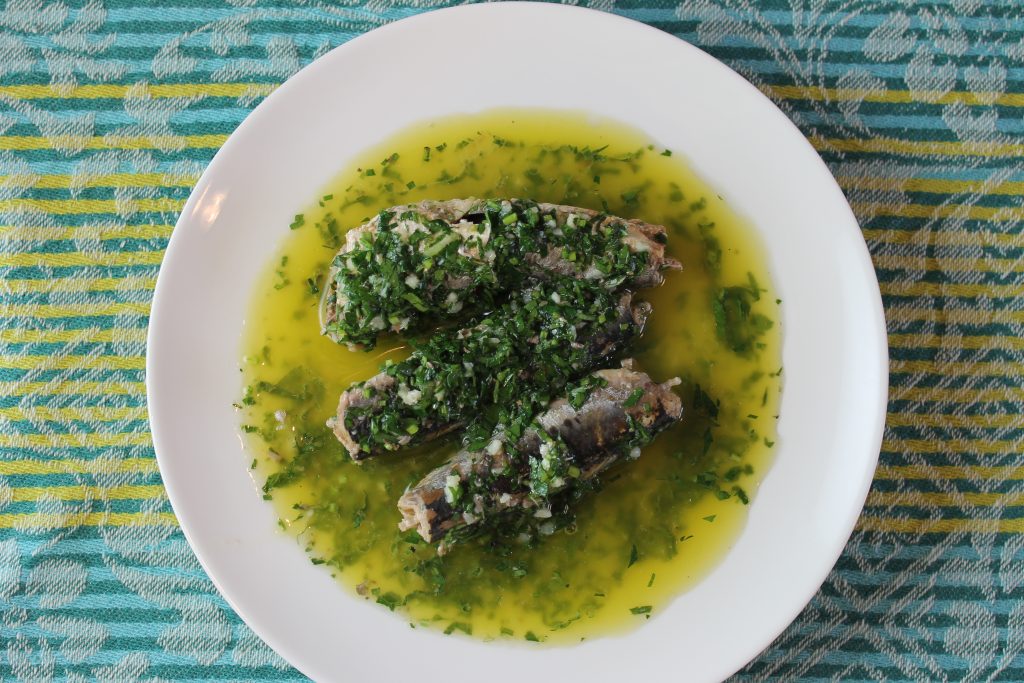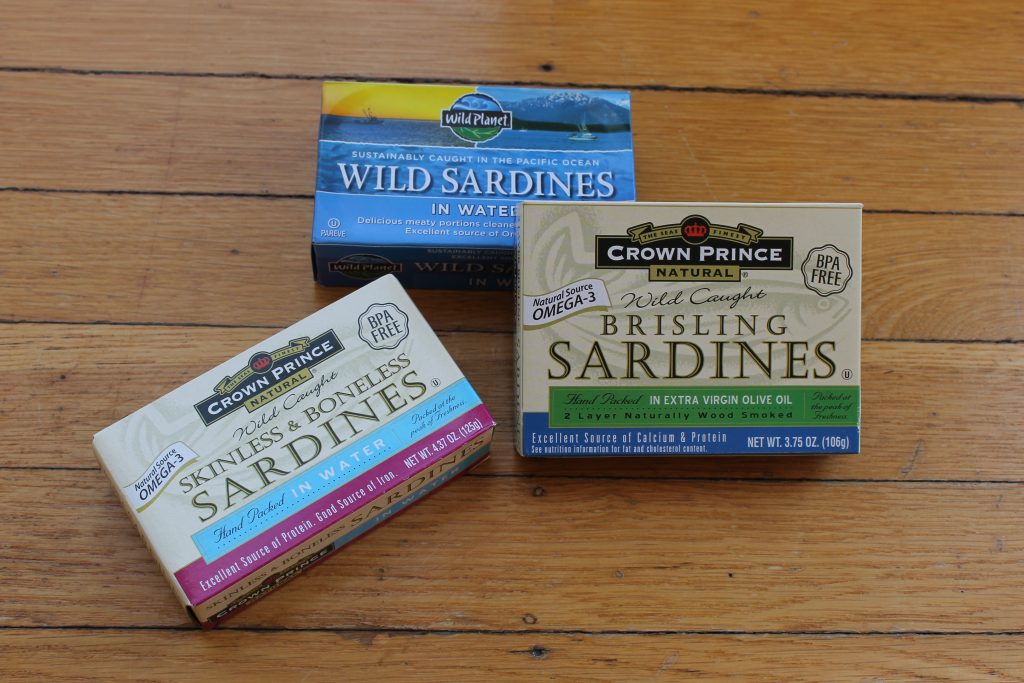

If you’ve been following my blog, you’ve noticed already that I have affection for the underdogs of the nutrition world like the flat steaks and organ meats.
Sardines are definitely one of the underdogs of the sea. Shall we say an underfish?
The underdog foods, in this case, sardines, are the less attractive and desirable fish we have available and are obviously less expensive. But if you look closer, you’ll find a nutritional treasure that is delicious too.
Sardines are the common name for a group of small fish rich with fat in the herring family. Anchovy is another small fish with a similar fat profile that I can include in this family of small, fatty fish.
Sardines mostly come canned, but they’re becoming more available fresh these days. Caned sardines come with the bones which makes them an excellent calcium source.
The Flavor Issue
My wife hates sardines. Sardine salad is a common lunch for me, and by now I have almost gotten used to the face full of disgust she makes every time I open a can.
I have to admit that recently, she’s been demonstrating some real bravery by trying to eat sardines, as long as the flavor is masked by loads of lemon and olive oil. How is it going? Well, it’s a long process of an acquired taste I guess.
Why is it that sardines are so challenging to the taste buds of so many people?
Obviously, there are cultural conditionings that are involved. For example, some children of immigrants from Eastern Europe or Scandinavia will consider pickled herring a delicacy. They come from a rich culinary tradition of cured, dried, and even fermented fish.
But more than this, I think that sardines are another example of the tyranny of the standard American diet.
The food industry has been narrowing the diversity of the food available to us for decades. By doing so it also narrows the taste range of our palates and our ability to enjoy a wide variety of flavors.
The industry “educates” our palates to like boring, tasteless, and lean cuts of meat like chicken breast, and to exclude other cuts like organ meats that we consider “exotic”.
In the same way, we’ve been educated to prefer gray dry chunks of canned tuna in our lunch salads instead of much better-tasting (I think) and more nutritious sardines.
Sardines Are Really Good For You!
Omega-3
Sardines are one of the most concentrated sources of omega-3 fatty acids, EPA and DHA. These fatty acids are involved in supporting so many systems and processes in your body that they deserve a post of their own.
Just to mention a few, they support your brain function and heart health and keep inflammation in control, which makes them super important for athletes.
Sardines, like other fatty fish, are an especially good source for DHA. They have about a 2:1 ratio of DHA to EPA. Although both omega 3 fatty acids are important and complete the benefits of each other, DHA was found to have a more significant effect in improving cognitive functions, especially memory abilities.
Bone Health
Canned sardines contain a good amount of calcium since their bones are soft and edible. A three-ounce serving of sardines (about one can) delivers 35% of your calcium requirements.
More than that, sardines are also a good source of vitamin D, which is essential for bone health since it helps to increase calcium absorption. They are also a good source of phosphorus, a mineral that is important for a strong bone matrix. (1)
An abundance of vitamins and minerals
One can of sardines provides the daily requirement of B12 and a significant amount of B2 and B3. Sardines also provide a good amount of selenium, iron, magnesium, copper, and zinc.
Great Source of Protein
One can of sardines provides you with twenty-five to thirty grams of protein. Considering how easy it is to just open a can and put it over a salad, and with all the other nutritional bonuses, I think it’s one of the best protein supplies for a fast and easy lunch.
How to Buy Sardines
In most cases, canned sardines will be your option. They are available and easy to prepare. As mentioned above, they also contain the bones and have the great bonus of a highly concentrated calcium source.
Fresh sardines are available sometimes and are definitely worth the effort of boning and preparing if you’re up to it.
Canned sardines will usually come in olive oil, simple tomato sauce, or water. It’s important to check the quality of the ingredients in the sauce.
Avoid sardines in vegetable oils like soy or sunflower or even pure olive oil. Pure olive oil is a lower-quality oil compared to extra virgin olive oil. Most sardines in olive oil I see in stores contain pure olive oil.
My advice is that you buy sardines in water and add your own good-quality olive oil and lemon.
Experiment with different kinds of sardines.
Some of My Favorite Brands:
Wild Planet – The sardines are big and meaty. They come from the Pacific and feel very fresh. Wild Planet also offers white anchovies, which are different than the typical anchovies you may know. They have a milder flavor, and they’re less fishy.
The company has a very good website with nutritional information, and it seems to be very environmentally conscious. All of their fish are sustainably sourced.
I like the fact that they even provide information about DHA and EPA content on the can itself.
Crown Prince – offers two kinds of sardines I recommend:
Skinless and boneless sardines, which they source from Morocco.
Brisling sardines: Delicate and smaller sardines. They are lightly smoked and sourced from Scotland.
According to their website, they source their sardines from well-established and sustainable fisheries around the world. Their cans are also BPA-free.

Cole’s
Cole’s sources their sardines from Portugal and these are one of my favorite kinds. Their website as well gives a lot of information about the quality and sustainability of their fish.
Matiz
Their sardines are harvested off the coast of Galicia and have great flavor.
In Good Health!




